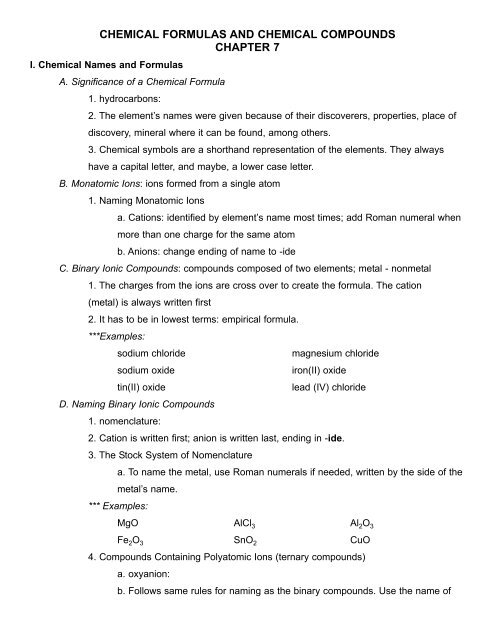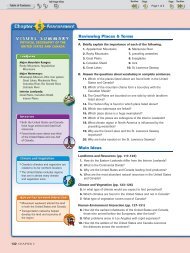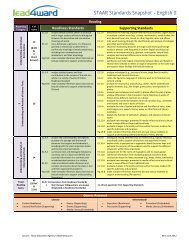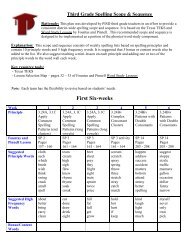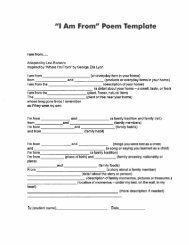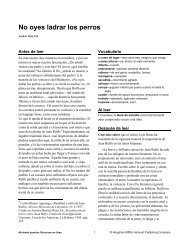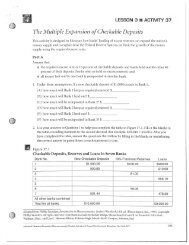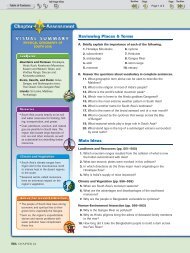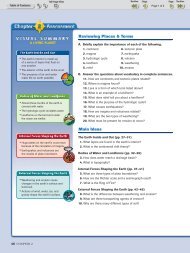CHEMICAL FORMULAS AND CHEMICAL COMPOUNDS CHAPTER 7
CHEMICAL FORMULAS AND CHEMICAL COMPOUNDS CHAPTER 7
CHEMICAL FORMULAS AND CHEMICAL COMPOUNDS CHAPTER 7
You also want an ePaper? Increase the reach of your titles
YUMPU automatically turns print PDFs into web optimized ePapers that Google loves.
<strong>CHEMICAL</strong> <strong>FORMULAS</strong> <strong>AND</strong> <strong>CHEMICAL</strong> <strong>COMPOUNDS</strong><br />
<strong>CHAPTER</strong> 7<br />
I. Chemical Names and Formulas<br />
A. Significance of a Chemical Formula<br />
1. hydrocarbons:<br />
2. The element’s names were given because of their discoverers, properties, place of<br />
discovery, mineral where it can be found, among others.<br />
3. Chemical symbols are a shorthand representation of the elements. They always<br />
have a capital letter, and maybe, a lower case letter.<br />
B. Monatomic Ions: ions formed from a single atom<br />
1. Naming Monatomic Ions<br />
a. Cations: identified by element’s name most times; add Roman numeral when<br />
more than one charge for the same atom<br />
b. Anions: change ending of name to -ide<br />
C. Binary Ionic Compounds: compounds composed of two elements; metal - nonmetal<br />
1. The charges from the ions are cross over to create the formula. The cation<br />
(metal) is always written first<br />
2. It has to be in lowest terms: empirical formula.<br />
***Examples:<br />
sodium chloride<br />
sodium oxide<br />
tin(II) oxide<br />
D. Naming Binary Ionic Compounds<br />
1. nomenclature:<br />
magnesium chloride<br />
iron(II) oxide<br />
lead (IV) chloride<br />
2. Cation is written first; anion is written last, ending in -ide.<br />
3. The Stock System of Nomenclature<br />
a. To name the metal, use Roman numerals if needed, written by the side of the<br />
metal’s name.<br />
*** Examples:<br />
MgO AlCl 3 Al 2 O 3<br />
Fe 2 O 3 SnO 2 CuO<br />
4. Compounds Containing Polyatomic Ions (ternary compounds)<br />
a. oxyanion:<br />
b. Follows same rules for naming as the binary compounds. Use the name of
the polyatomic ion when present.<br />
*** Examples:<br />
Sodium nitrite<br />
Magnesium nitrate<br />
Fe 2 (SO 4 ) 3 FeSO 4<br />
Ammonium chloride<br />
Ammonium sulfide<br />
(NH 4 ) 3 N<br />
NH 4 CLO<br />
Ammonium chromate<br />
Ammonium phosphate<br />
E. Naming Binary Molecular Compounds (two nonmetals)<br />
1. Use Greek prefixes that give the number of atoms, not the charge.<br />
mono 1 tetra 4 hepta 7 deca 10<br />
di 2 penta 5 octa 8<br />
tri 3 hexa 6 nona 9<br />
2. Element with smaller group number is written first or, if in the same group, the one<br />
with the highest period number. Only assign prefix if it’s more than one atom.<br />
3. The second element ends in ide and always uses a prefix.<br />
*** Examples:<br />
CO<br />
carbon dioxide<br />
SF 6<br />
phosphorus trichloride<br />
PCl 5<br />
dinitrogen monoxide<br />
NO<br />
dinitrogen trioxide<br />
NO 2<br />
dinitrogen pentoxide<br />
F. Covalent-Network Compounds<br />
G. Acids and Salts<br />
1. Binary acids: consists of two elements (begins with hydrogen); solutions in water<br />
a. H-nonmetal: hydro _____ ic acid<br />
*** Examples:<br />
HCl<br />
hydroiodic acid<br />
hydrobromic acid<br />
H 2 S<br />
2. Ternary acids (oxyacids): contain hydrogen, oxygen and another element<br />
a- H- polyatomic ion<br />
b- ate ending is changed to ic; ite ending is changed to ous.<br />
c- DO NOT USE HYDRO!!! The word acid implies the presence of hydrogen.<br />
*** Examples:<br />
Perchloric acid HClO 3
Chlorous acid<br />
HNO 4<br />
Nitrous acid<br />
H 2 SO 5<br />
HClO<br />
Nitric acid<br />
HNO<br />
Sulfuric acid<br />
Sulfurous acid H 2 SO 2<br />
3. salt:<br />
II. Oxidation number:<br />
1. oxidation number / oxidation state: used to indicate the distribution of electrons among the<br />
atoms in a compound; charge on a monatomic ion.<br />
A. Assigning Oxidation Numbers<br />
1. Pure elements are always ______.<br />
2. Binary molecular compounds: more electronegative element= negative charge as an<br />
anion / less electronegative element= positive charge as a cation.<br />
3. Fluorine= ____ in all compounds<br />
4. Oxygen= ____ in most compounds; exception: peroxides (__) and compounds with<br />
F (__)<br />
5. Hydrogen= ___ with more electronegative elements; ___ with metals<br />
6. Sum of the oxidation numbers for a neutral compound is ______.<br />
7. Sum of the oxidation numbers for an ion _______ the charge of the ion.<br />
B. Using Oxidation Numbers for Formulas and Names<br />
1. We can use the Stock system instead of prefixes to name compounds.<br />
III. Using Chemical Formulas<br />
A. Formula Masses: _____________________________________________ (formula<br />
unit, molecule or ion).<br />
*** Examples:<br />
SO 3 C 12 H 22 O 11<br />
NaCl (NH 4 ) 2 CO 3<br />
B. Molar Masses: mass of one mole of a compound<br />
C. Molar Mass as a Conversion Factor<br />
*** Examples<br />
a) Calculate the grams in 2.00 moles of magnesium hydroxide.<br />
b) Calculate the number of moles of iron (II) oxide in 1.204 x 10 21 formula units.
c) Calculate the number of particles in 32.0 grams of methane.<br />
d) Calculate the number of oxygen atoms in 3 moles of carbon dioxide.<br />
e) Calculate the number of cations in 3.55 grams of sodium oxide.<br />
D. Percentage Composition:<br />
*** Examples:<br />
1. Calculate the percent hydrogen and percent oxygen in water.<br />
2. Calculate the percent nitrogen, percent hydrogen, percent phosphorus, and percent<br />
oxygen in ammonium phosphate.<br />
3. Calculate the percent copper (II) sulfate and the percent water in copper (II) sulfate<br />
pentahydrate.<br />
*** Hydrates: substances that absorb water from the air. Written like: CuSO 4 .5H 2 O<br />
4. Calculate the grams of phosphorus in 351 grams of calcium phosphate.<br />
IV. Determining Chemical Formulas<br />
1. empirical formula:<br />
A. Calculation of Empirical Formulas<br />
% ---> grams -----> moles -----> mole ratio ------> empirical formula<br />
*** Examples:<br />
1. Calculate the empirical formula for a compound that is 88.8% copper and 11.2% oxygen.<br />
2. Calculate the empirical formula for a compound that is 38.67% calcium, 19.98% phospho<br />
rus, and 41.25% oxygen.<br />
3. Calculate the empirical formula for a compound that is 72.3% iron and 27.7% oxygen.<br />
4. Calculate the empirical formula for a compound that is 83.9% Sb and 16.1% N.<br />
5. Calculate the empirical formula for the hydrate BaCl 2 .?H 2 O with the following data: 2.66<br />
grams of barium chloride and 0.44 grams of water.
B. Calculation of Molecular Formulas<br />
- molecular formulaempirical<br />
formula ---> molar mass of e.f. ----> divide weight from problem by molar<br />
mass of empirical --->multiply this answer by empirical formula to get molecular for<br />
mula<br />
*** Example<br />
1. Calculate the molecular formula for a compound that is 92.3% carbon and 7.7% hydrogen<br />
with a molecular weight of 78 grams.<br />
*** The molecular formula may or may not be the same as the empirical formula.


